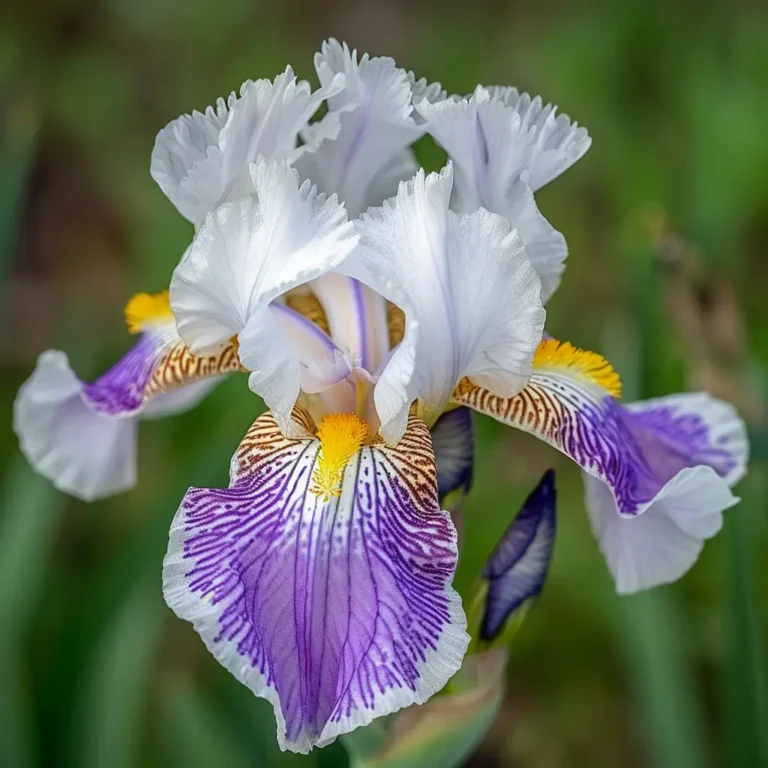Introduction
Pink roses (Rosa) are among the most beloved flowers, celebrated for their delicate beauty and romantic symbolism. Whether in gardens or floral arrangements, pink roses add a touch of elegance and charm. This article explores the fascinating history, types, care, and symbolism of pink roses, guiding you on how to grow and enjoy these stunning flowers.
History and Origin of Pink Roses
The historical significance of pink roses dates back centuries, symbolizing grace and admiration in various cultures. Originating from ancient Persia and China, pink roses were cultivated for their beauty and fragrance. Over time, they have evolved through hybridization, resulting in numerous varieties that captivate gardeners and enthusiasts worldwide.
Types of Pink Roses
Pink roses come in various types, each with unique characteristics:
- Hybrid Tea Roses: Known for their large, single blooms on long stems, perfect for cutting.
- Floribunda Roses: Produce clusters of flowers, offering a vibrant display in gardens.
- Grandiflora Roses: A blend of Hybrid Tea and Floribunda, with large blooms in clusters.
- Climbing Roses: Ideal for trellises and arbors, adding vertical interest.
- Shrub Roses: Hardy and low-maintenance, great for landscape planting.
- Miniature Roses: Perfect for containers and small spaces, with petite blooms.
Growing Pink Roses
To grow pink roses successfully, consider the following:
Climate and Soil Requirements
Pink roses thrive in well-drained soil with plenty of organic matter. They prefer a sunny location with at least six hours of direct sunlight daily.
Planting Tips and Techniques
- Dig a hole twice the width of the root ball.
- Amend the soil with compost for better drainage and nutrients.
- Place the rose at the same depth it was in the container.
- Water thoroughly after planting.
Watering and Fertilizing Guidelines
- Water deeply once a week, more often in hot weather.
- Use a balanced rose fertilizer in early spring and after the first bloom cycle.
Common Pests and Diseases
- Aphids, spider mites, and Japanese beetles are common pests.
- Blackspot, powdery mildew, and rust are typical diseases.
- Regular monitoring and appropriate treatments keep roses healthy.
Caring for Pink Roses
Proper care ensures your pink roses thrive and bloom profusely.
Pruning Tips
- Prune in early spring before new growth begins.
- Remove dead and diseased wood.
- Shape the plant by cutting back canes to outward-facing buds.
Seasonal Care Routines
- Mulch around the base to conserve moisture and suppress weeds.
- Fertilize after each bloom cycle to encourage continuous flowering.
Extending Bloom Period
- Deadhead spent flowers to promote new blooms.
- Provide consistent water and nutrients.
Symbolism and Meaning of Pink Roses
Pink roses carry rich symbolism, varying by shade:
- Light Pink: Gentleness and admiration.
- Medium Pink: Gratitude and appreciation.
- Dark Pink: Recognition and elegance.
In various cultures, pink roses are used to express heartfelt emotions, making them popular in weddings and celebrations.
Designing with Pink Roses
Incorporate pink roses into your landscape and floral designs:
Landscaping Ideas
- Plant in mixed borders for a splash of color.
- Use climbing pink roses to cover walls and fences.
- Create a rose garden with various pink rose types for visual interest.
Pairing with Other Plants
- Combine with lavender and salvia for a fragrant garden.
- Mix with white and purple flowers for contrast.
Floral Arrangements
- Use as the focal point in bouquets.
- Combine with greenery and filler flowers for elegant arrangements.
Popular Pink Rose Varieties
Explore these top pink rose varieties:
- Queen Elizabeth: Tall, grandiflora rose with pink blooms.
- Bonica: Floribunda with clusters of light pink flowers.
- Eden: Climbing rose with large, fragrant pink blooms.
- Cecile Brunner: Small blooms on a vigorous climbing plant.
- Carefree Wonder: Shrub rose with disease-resistant pink flowers.
- Fairy: Miniature rose with a profusion of tiny pink blooms.
- Gertrude Jekyll: English rose with strong fragrance and large blooms.
- New Dawn: Climbing rose known for its hardiness and beauty.
- David Austin: Hybrid with old rose charm and modern vigor.
- Zephirine Drouhin: Thornless climbing rose with deep pink flowers.
Frequently Asked Questions
How often should I water pink roses?
Water deeply once a week, ensuring the soil is moist but not waterlogged. Increase frequency during hot weather.
What type of fertilizer is best for pink roses?
A balanced rose fertilizer applied in early spring and after each bloom cycle is ideal.
Can pink roses grow in containers?
Yes, miniature and compact varieties are perfect for container gardening.
How do I protect pink roses from pests?
Regularly inspect for pests and use insecticidal soap or neem oil as needed.
When is the best time to plant pink roses?
Early spring or fall, when temperatures are mild, is the best time to plant.
Conclusion
Pink roses (Rosa) are a delightful addition to any garden or floral arrangement. Their beauty, variety, and symbolism make them a favorite among gardeners and flower enthusiasts. With proper care and the right growing conditions, you can enjoy the enchanting charm of pink roses year-round. Happy gardening!

